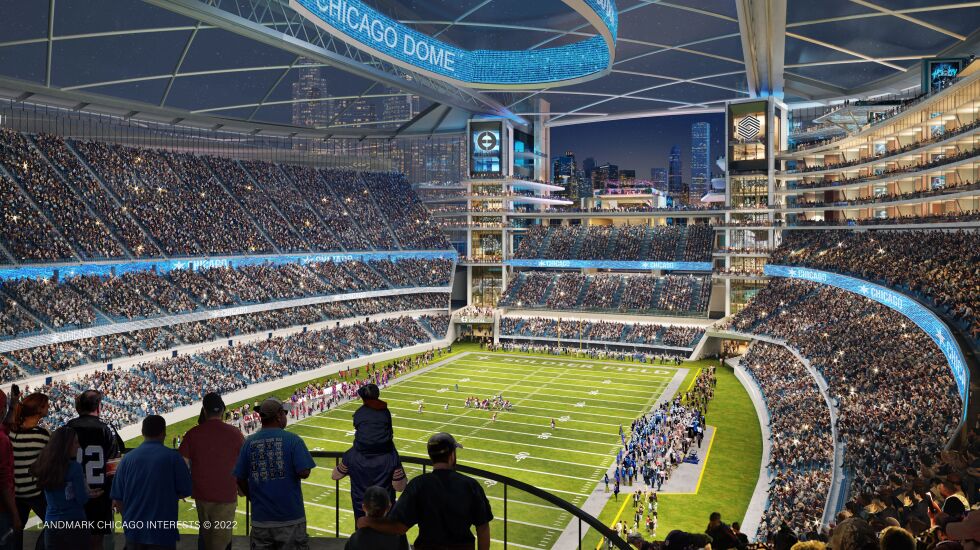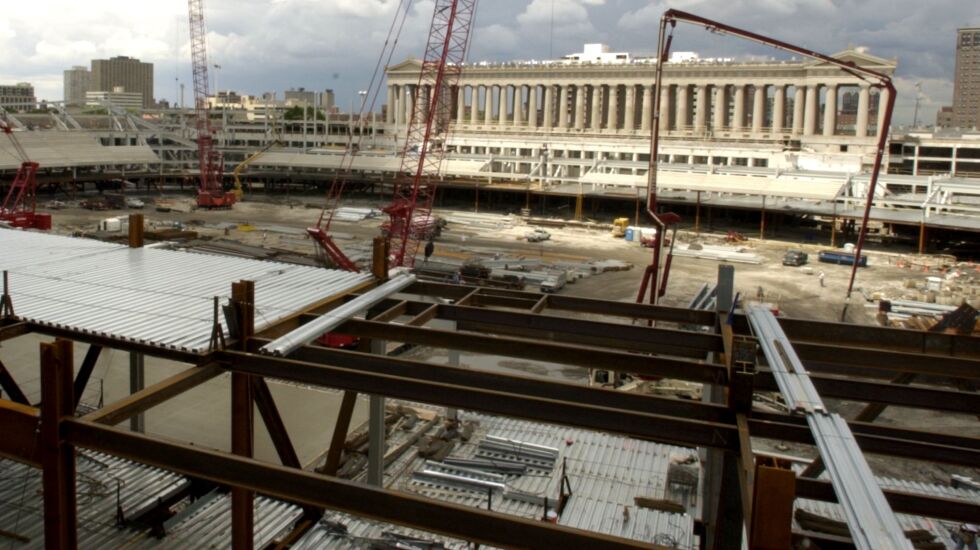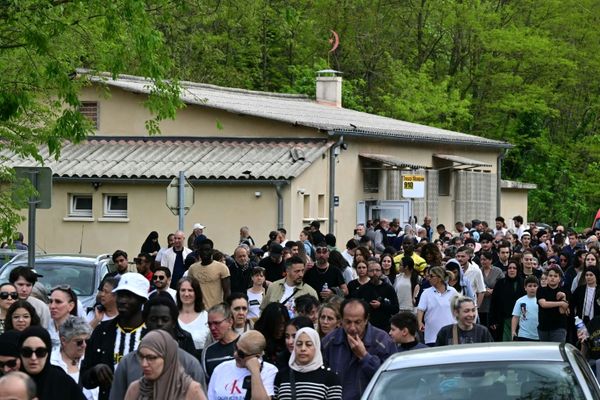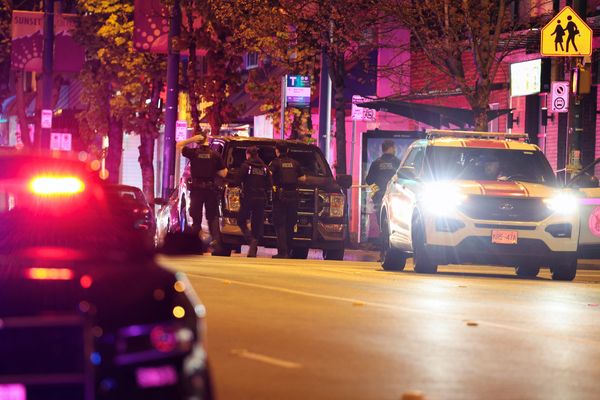
Mayor Lori Lightfoot offered Monday to put a dome on Soldier Field, at a potential cost of $2.2 billion, in a desperate attempt to keep the Bears in Chicago or save face if they leave for Arlington Heights.
A portion of the cost would be paid for by selling naming rights “in a way that respects Soldier Field’s legacy as a war memorial by keeping Soldier in the name of the facility,” as the working group charged with “re-imagining” the museum campus suggested in its 50-page report. But key details about how the money would be raised were not revealed.
Beyond naming rights for the stadium, there are “many other potential ancillary naming opportunities [e.g. South lot, new club seating, renovated concourses, etc.] that should be considered to help offset the cost of renovations,” according to the working group.
“We need to invest in Soldier Field. Soldier Field must be a year-round destination. We must enhance the fan experience. And that’s precisely what we aim to do,” Lightfoot told a news conference at Soldier Field.
“We are making a compelling case for the Bears to stay in Chicago. They want a Tier One stadium to maximize revenues and we agree.”
Noting that the $900 million to $2.2 billion cost of a domed and expanded Soldier Field would be “considerably less than the cost of a new stadium, Lightfoot said, “It makes the most economic sense for that storied franchise to stay” in Chicago.
The mayor refused to say how she planned to fund the cost of a domed and expanded Soldier Field beyond the naming rights opportunities.
She would only say that the costs would vary, depending on which option is chosen and assure Chicagoans that she would be a “prudent fiduciary” of public funds and underscore her commitment to “maximize the return on any investment of your tax dollars.”
Samir Mayekar, deputy mayor for neighborhood and economic development, said “many levers exist” to bankroll a project that ranges in cost from “just under $1 billion to just over $2 billion.”
They include: “league financing, naming rights and debt capacity,” he said.
Lightfoot outlined three options for Soldier Field, one of which calls for a domed stadium. A second option would go without a dome but would still make the stadium a “top-tier” playing site for an NFL team, Lightfoot promised. The final option involves renovating Soldier Field to continue housing the Chicago Fire soccer club and other events.
Veteran stadium developer Bob Dunn described his proposal as a “hybrid” of Detroit’s Ford Field. It includes “four super-columns suspended over the existing structure” of Soldier Field.
While some veteran architects have questioned whether Soldier Field can support a dome, Dunn said you “can build a dome above it” at a “massive cost savings” over the price tag for a new stadium.
The soccer-only option would elevate the field 42 feet to “create an optimal bowl” for soccer, Dunn said.

The mayor resurrected the controversial and often-considered-and-rejected idea of a dome as one of three options for improving the stadium that reopened in 2003 after a $660 million makeover. That project won’t be fully paid off until 2032.
The other two possibilities are: preparing the lakefront stadium to receive a dome without actually putting a lid on it; or, allowing the Bears to leave and proceeding with a more modest renovation of Soldier Field for the Chicago Fire, college football games, concerts and other potential uses.
With or without the Bears, Lightfoot argued a dome could help Chicago lure marquee events like the Super Bowl and the NCAA’s Final Four.
In addition to a dome, the mayor’s plan for Soldier Field also includes:
• Increasing the NFL’s lowest seating capacity from 61,500 seats to 70,000 seats.
• Raising the number of “traditional” suites from 133 to 140.
• Adding six new “major clubs and experiential areas.”
• Creating “more flexible events space and multi-purpose venues,” four of them with capacities ranging from 5,000 to 60,000.
• Quadrupling square footage devoted to food and beverage space — to 200,000 sq.ft.
• Dramatically expanding the opportunity for major sponsorships and naming rights.
“You maximize revenue, you maximize franchise value,” Dunn said, in an attempt to entice the Bears, a family-owned franchise controlled by the McCaskey family.
The Bears responded to the mayor’s offer by reiterating what they said when the 23-member working group released its 50-page report.
According to the team, their hands are tied by the agreement they signed to purchase the 326-acre site of the now-shuttered Arlington International Racecourse for $197.2 million.
“The only potential project the Chicago Bears are exploring for a new stadium development is Arlington Park. As part of our mutual agreement with the seller of the property, we are not pursuing alternative stadium deals or sites, including renovations to Soldier Field, while under contract,” said the statement, first released on July 7 and reiterated Monday.
“We have informed the City of Chicago that we intend to honor our contractual commitments as we continue our due diligence and predevelopment activities on the Arlington Heights property. In the meantime, we remain committed to fulfilling our permit operating agreement at Soldier Field.”
Juanita Irizarry, executive director of Friends of the Parks, served on the 23-member working group but was excluded from the final round of discussions on the future of Soldier Field.
Irizarry argued it makes no sense to spend hundreds of millions, if not billions, on a dome.
“We have not seen any plan that would keep that burden off the taxpayers,” Irizarry said.
“Friends of the Parks will not carry water for the mayor on this. Friends of the Parks does not agree that there should be a dome on Soldier Field. It is prohibitively expensive and there are other priorities where the city’s money should be spent.”

The money would be better spent “rebuilding or fixing crumbling fieldhouses and other park infrastructure around the city,” particularly on the long-neglected South and West sides, she said.
Irizarry also condemned as phony inclusiveness the process that Lightfoot used to get to this point.
“We all know this is the mayor’s M.O. It’s disappointing, but not surprising that the mayor would convene a small group of folks, but suggest that all of us were on board and supportive,” Irizarry said.
“There were side conversations that were not vetted through the whole group. That is not surprising. We imagined all along that there would be discomfort in participating on this committee because there would end up being things we did not agree with like this.”
Taking part in Lightfoot’s announcement was Dunn, president of Landmark Development. He’s behind a plan to build a new high-rise neighborhood called One Central that would be built over the Metra Electric tracks just west of Soldier Field. But he’s also a veteran stadium developer who has worked with several NFL teams, including all of the Bears’ NFC North division rivals: the Green Bay Packers, the Detroit Lions and the Minnesota Vikings.
Dunn played a key role in producing a rendering Lightfoot issued Monday showing Soldier Field surrounded by a new structure supporting a retractable roof. A source said that because of his expertise in NFL stadiums, Dunn has volunteered ideas about what to do with Soldier Field.
The football stadium’s future is important to the One Central project, which requires an estimated $6.5 billion state subsidy for a transit hub. Dunn has said the hub is needed to support his development. One Central has gotten a frosty reception from Lightfoot and from many residents on the Near South Side. Gov. J.B. Pritzker, who backed legislation for the transit hub, has since grown cool to the financial obligation.
One Central has not gotten city zoning approval. The transit agencies involved — CTA, Metra and Amtrak — have not committed themselves to any transit hub, although Metra has backed early construction work as long as it doesn’t impede commuter trains.
Two architects who worked on the 2002-03 renovation and a structural engineer familiar with the project also have told the Sun-Times the mayor’s hands may be tied by the constraints of the existing structure.

Chicago architects Dirk Lohan and Adrian Smith said the current 61,500 capacity — the NFL’s smallest — can be expanded only a little, and only in the end zones. A retractable roof would be difficult, requiring a new support structure.
Ever since the Bears signed the agreement to purchase the old racetrack site, Lightfoot has sounded almost resigned to losing the team.
With or without the Bears, Lightfoot said she wanted to improve the fan experience at Soldier Field and maximize year-round revenues.
The 23-member working group wanted to move the ball over the goal line with a host of changes. Chief among them was resurrecting the idea of a dome — an architecturally difficult, enormously expensive feat intended to boost attendance at winter events.
“These costs would almost certainly not be offset by additional revenue opportunities” — even if adding a dome helps lure a Super Bowl, Wrestlemania or the NCAA Final Four, the report states.
Changing the Soldier Field name is anathema to veterans groups. Former Illinois Gov. Pat Quinn, mulling a race for mayor, championed the opposition to a naming rights deal.
Nevertheless, the report noted that “even relatively modest modifications” to Soldier Field would “incur significant costs” and that a “large portion of these updates” could be bankrolled by selling naming rights in a respectful way.
Citing, among other examples, VyStar Veterans Memorial Arena in Jacksonville, Florida, the working group’s report notes: “A similar arrangement in Chicago would allow a sponsorship agreement to be pursued in a way that respects Soldier Field’s legacy as a war memorial by keeping Soldier in the name of the facility,” the report states.
Sport marketing expert Marc Ganis has argued putting a dome over Soldier Field, expanding the NFL’s lowest seating capacity, installing synthetic turf and selling naming rights will not keep the Bears in Chicago because it’s “trying to put lipstick on a pig.”
“Even if they achieved everything that’s been listed and they paid for it all with public funds, it wouldn’t even be close to sufficient for a future long-term home for the Bears,” Ganis, who has advised numerous NFL teams on stadium financing, told the Sun-Times earlier this month.
“I give them credit for trying to put lipstick on a pig. But putting a roof on it, adding a few more restaurants [seats and suites] doesn’t change what the building is: a small, difficult-to-get-to, publicly owned and operated stadium that is not even close to being sufficient to host an NFL team in the third-largest market in the country for decades to come in a modern-day NFL that requires a large physical stadium with many areas to be programmed and team facilities.”







